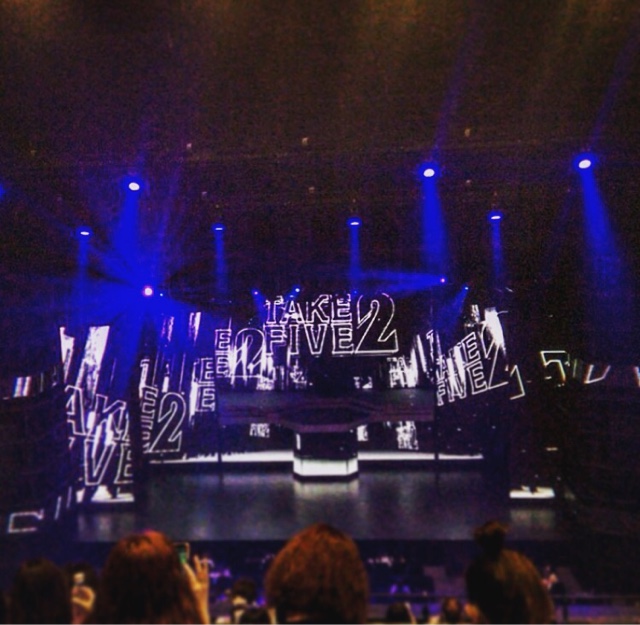*Orihinal na inilathala sa May 2016 issue ng Pinoy Gazette
Ang Toden Arakawa Line ay isa sa dalawa na lamang na
natitirang street car sa Tokyo. Ang isa ay ang Tokyu Setagaya Line na
nagsisimula sa Sangenjaya at nagtatapos sa Shimo-Takaido. Ang Toden Arakawa
Line naman ay tumatakbo mula Waseda hanggang Minowabashi, may habang 12
kilometro at tumatagal ng 50 minuto ang byahe. Mainam gamitin ang Toden Arakawa
Line tuwing spring dahil marami itong nadadaanang magagandang lugar na puno ng
cherry blossoms. Kung summer naman, nalilinyahan ng malalaking mga rosas ang
dinadaanan ng tram mula Arakawa-nanachome hanggang Minowabashi.
Ilan sa mga madadaanan ng tram ay ang mga sumusunod na
pasyalan:
Asukayama Park. Ang
Asukayama Park ay puno ng mga cherry trees na sinasabing ipinatanim pa ng
shogun na si Tokugawa Yoshimune nang unang magbukas ang park noong 1873. Pero
hindi lamang “hanami” ang maaaring gawin sa loob ng park, mayroon din itong
tatlong museums – Ang Kita City Asukayama Museum, ang Shibusawa Memorial Museum
at ang Paper Museum. Makikita rin sa loob ng park ang dalawang lumang tren,
isang tram car at isang steam locomotive train na minsang ginamit sa Japan.
Maaaring bumaba sa Asukayama Station ng Toden Arakawa Line upang mapuntahan ito.
Arakawa Yuenchi.
Sa halagang ¥200 sa matatanda at ¥100 sa mga bata, maaari nang makapasok sa
Arakawa Yuenchi at sumakay sa iba’t ibang rides dito. Siyempre hindi mawawala
ang carousel at ferris wheel. Bagama’t maliit lang at walang masyadong iikutan,
mainam pumasyal dito kung gustong iwasan ang matao at magulong bahagi ng Tokyo.
Tamang-tama ito sa mga pamilyang gustong mag-bonding tuwing araw ng Linggo. Sa
gilid ng daan papunta rito ay makikita ang maliliit na mga lumang tindahan na
nagbabalik ng mga alaala ng Showa Japan. Nagbebenta ang mga ito ng “kakigori,”
choco banana at ilang mga maliliit na laruan at pagkaing pambata. Arakawa-Yuenchimae
ang pinakamalapit na istasyon ng tram dito.
Sugamo. Kung ang
Harajuku ay kilala bilang fashion street ng mga kabataan, kilala naman ang
Sugamo na tambayan ng mga “obaachan.” “Obaachan’s Harajuku” kung tawagin nila.
Makikita rito ang isang mahabang kalsada na nalilinyahan ng mga tindahang
nagbebenta ng mga goods na tiyak na patok sa mga obaachan tulad ng mga tungkod,
mga bag na may gulong, mga maluluwag at makukulay na damit at mga murang rain
boots. Makikita rin na ibinibenta rito ang mga pulang panloob na karaniwang isinusuot
ng mga obaachan bilang pampaswerte.
Sa dulo ng mahabang shopping street ay makikita ang Koshinzuka Station ng Toden
Arakawa Line. Sa kabilang dulo naman matatagpuan ang Sugamo Station ng JR
Yamanote Line.
Zoshigaya Cemetery. Bagamat
hindi ordinaryong pasyalan ang sementeryo, maraming dumadalaw sa Zoshigaya
Cemetery hindi lang para dalawin ang kanilang mga mahal sa buhay kundi para
silipin na rin ang libingan ng ilang kilalang tao na nakahimlay dito. Isa na
rito si Natsume Soseki, isang kilalang nobelista na nagpasikat ng mga nobelang “Kokoro,”
“Botchan” at “I am a Cat.” Dati rin nakalagay sa likod ng ¥1,000 bill ang
kanyang mukha bago ito palitan noong 2004. Nasa tapat lamang ng sementeryo ang
Toden-Zoshigaya Station.
Minowabashi. Dito
matatagpuan ang Joyful Minowa, isang mahabang shopping street kung saan tila
makakabili ng kahit ano – mula sa mga murang gulay at prutas, tinapay, tsaa, at
mga Japanese snacks, hanggang sa mga damit, sapatos, gamit sa bahay tulad ng
mga pang-luto at plato, mga sariwang bulaklak at marami pang iba. Hindi
kalayuan sa Minowa matatagpuan ang estatwa ni Yabuki Joe, ang kilalang
boksingero na bumida sa manga na “Ashita no Joe” na isinulat ni Ikki Kajiwara
at iginuhit ni Tetsuya Chiba. Nagkaroon din ito ng live action noong 2011 kung
saan gumanap ang kilalang idol na si Yamashita Tomohisa, mas kilala sa tawag na
YamaPi, bilang Joe. Mayaman din sa kasaysayan ang lugar na ito dahil dito
matatagpuan ang dating execution grounds noong Edo Period na ngayon ay
natabunan na ng sala-salabat na riles ng tren. Minowabashi ang huling istasyon
ng Toden Arakawa Line.
Sa halagang ¥400 ay maaaring makabili ng one-day unlimited pass sa Toden Arakawa Line na magbibigay ng pagkakataon sa pasahero na bumaba sa kahit anong istasyon at tuklasin ang sulok ng downtown Tokyo na tila nagbabalik ng mga alaala ng Showa Japan.


















